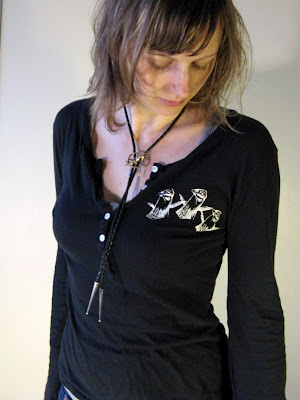There is some speculation that on the first Thanksgiving dinner, the Pilgrims would have eaten heath hens and not actually turkey. Heath hens were abundant in their habitat during Colonel Times. While the colonists were busy trying to establish themselves, the heath hens were roaming around in the fields from southernmost New Hampshire to northern Virginia
The shirt above has been silkscreened with 3 white prairie chickens that have their neck wings reaching out to each together. In the years since I first screen printed this shirt, it has faded from being jet black to a softer shade. It has also stretched out a bit from my constant use, the hen is one of favorite designs.
On this Thanksgiving, I want to pay tribute to the distinctive subspecies of the Greater Prairie Chicken known as the Heath Hen.

 The Heath hen image has graced many of the Die At The Helm billfolds. There is generally one hen on the front and one on the back of the wallet. First a base layer is applied and then a second coat of a different color is used to make the image more defined.
The Heath hen image has graced many of the Die At The Helm billfolds. There is generally one hen on the front and one on the back of the wallet. First a base layer is applied and then a second coat of a different color is used to make the image more defined.
The heath hen has been extinct since the 1930's. The population dwindled to less than 100 in the 1870's because of over-hunting. As the human population increased, the heath hen population decreased.
Efforts to save the last remaining birds were futile.
Efforts to save the last remaining birds were futile.
Heath hens were one of the first bird species that Americans tried to save from extinction. A bill "for the preservation of heath-hen and other game" was introduced in the New York State legislature. Upstate New York representatives misinterpreted the bill when it was read as an act to protect "Indians and other heathen"; Although the legislation was passed, it turned out to be unenforceable.
The length of a fully developed heath hen would have been around 17 inches and they generally would have weighed about two pounds.
Several key plumage characteristics separated the hens from other prairie chickens: they generally displayed a strong reddish hue in their plumage, especially in their crop area, and much thicker barring throughout the breast and sides. Their pinnae (horns) were generally pointed, and tails were a greyish-brown.
Today is the day to rejoice together with the community, to celebrate the completion of another the harvest cycle and to give thanks for the good fortunes of the year.







No comments:
Post a Comment